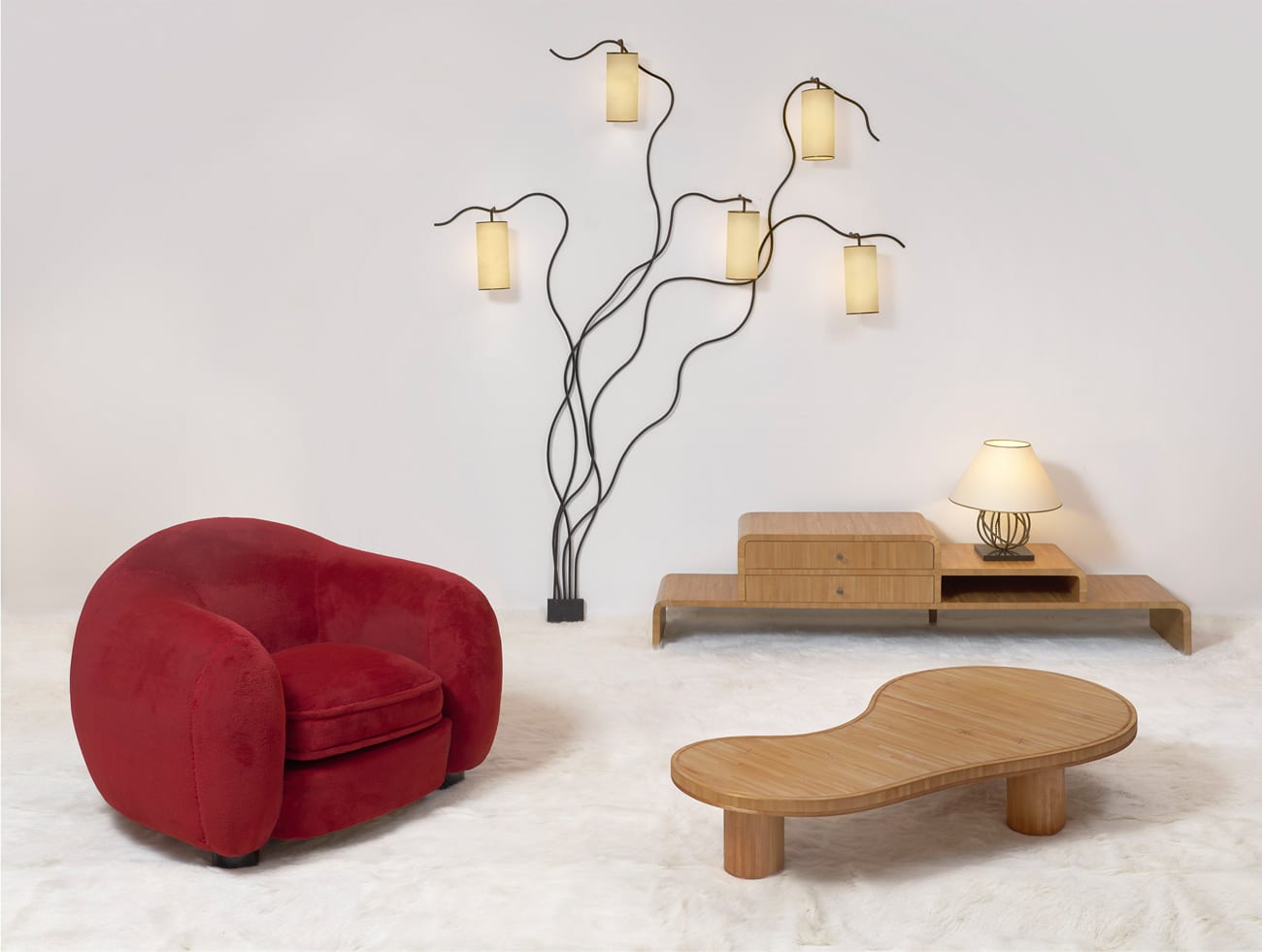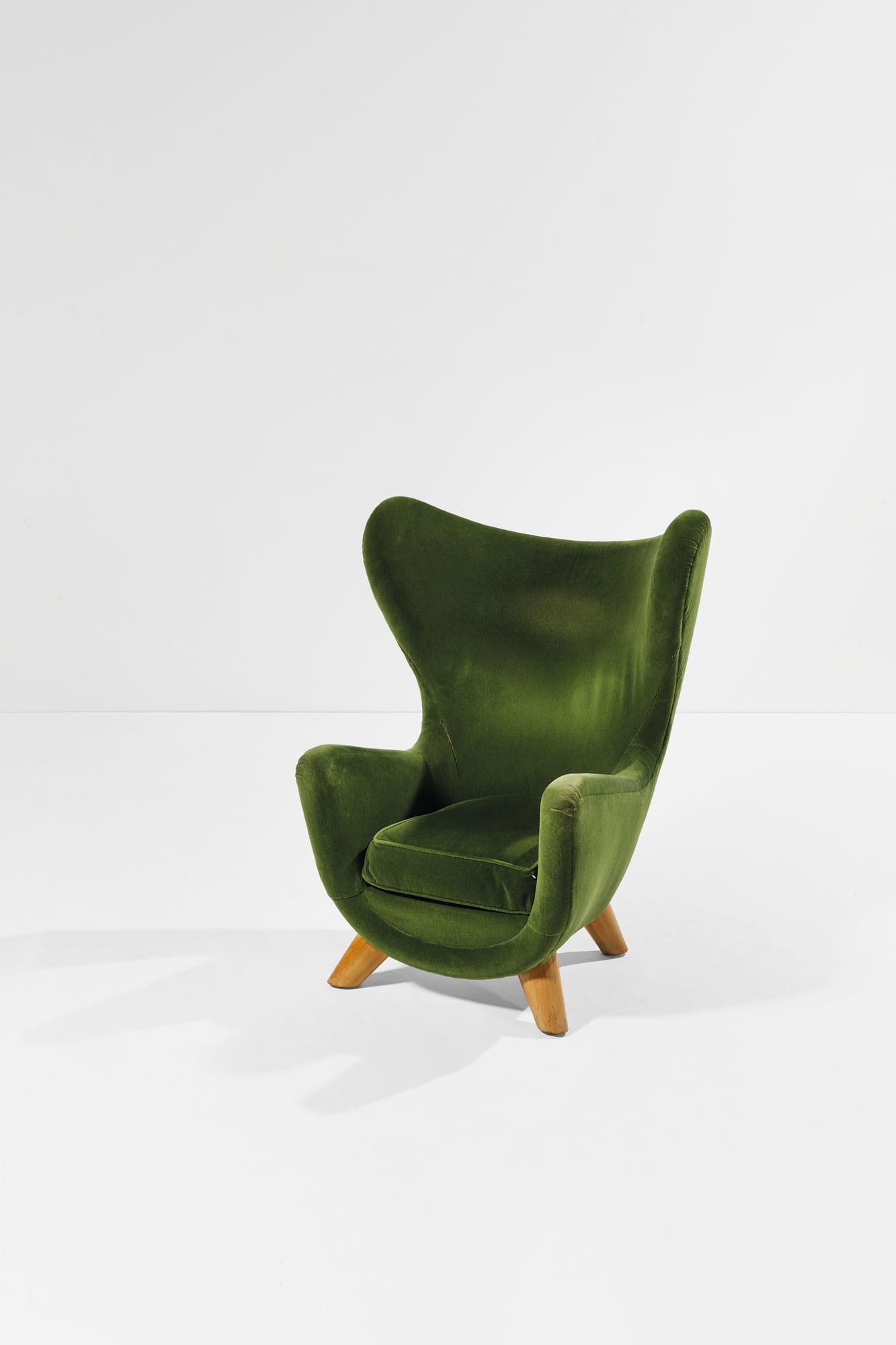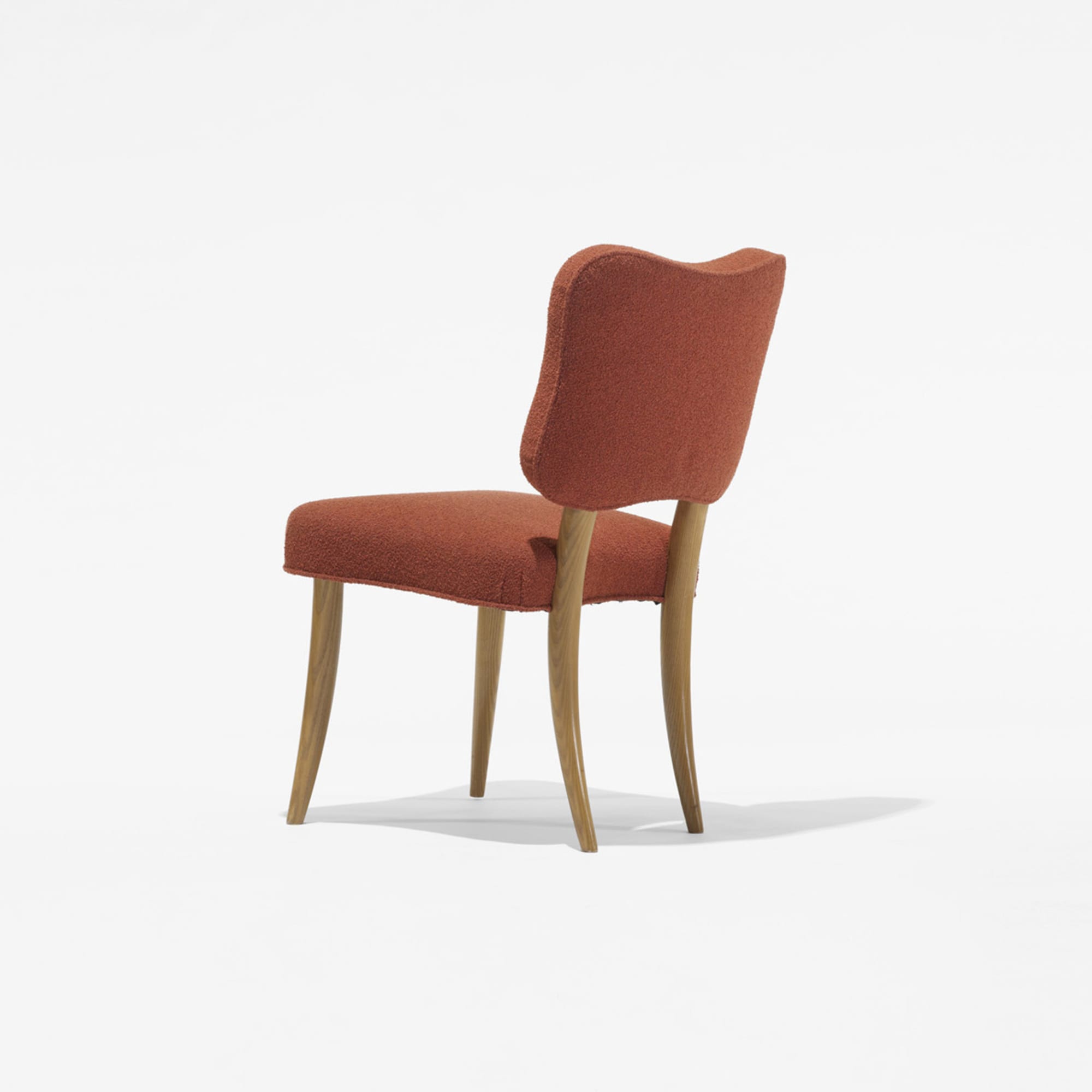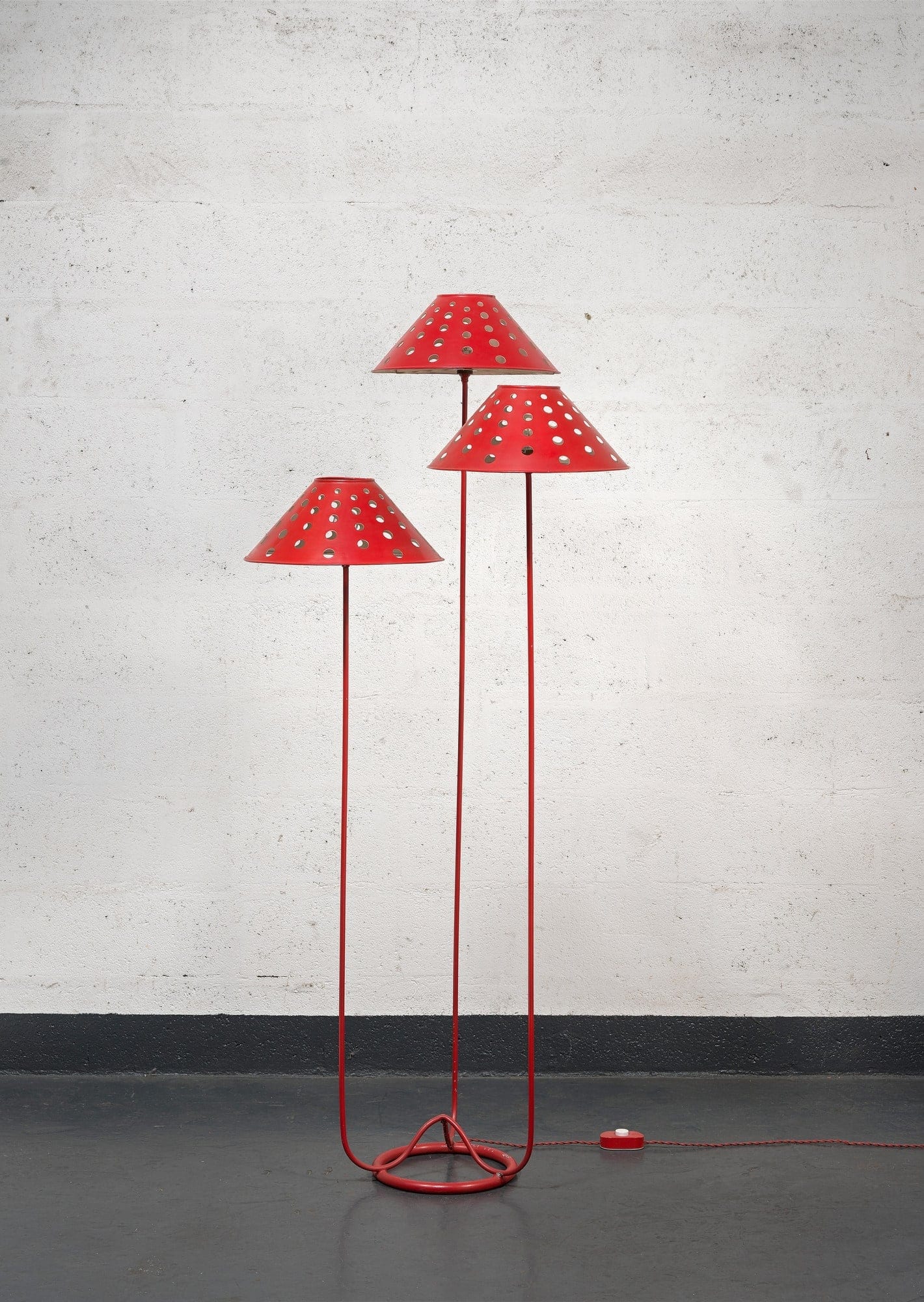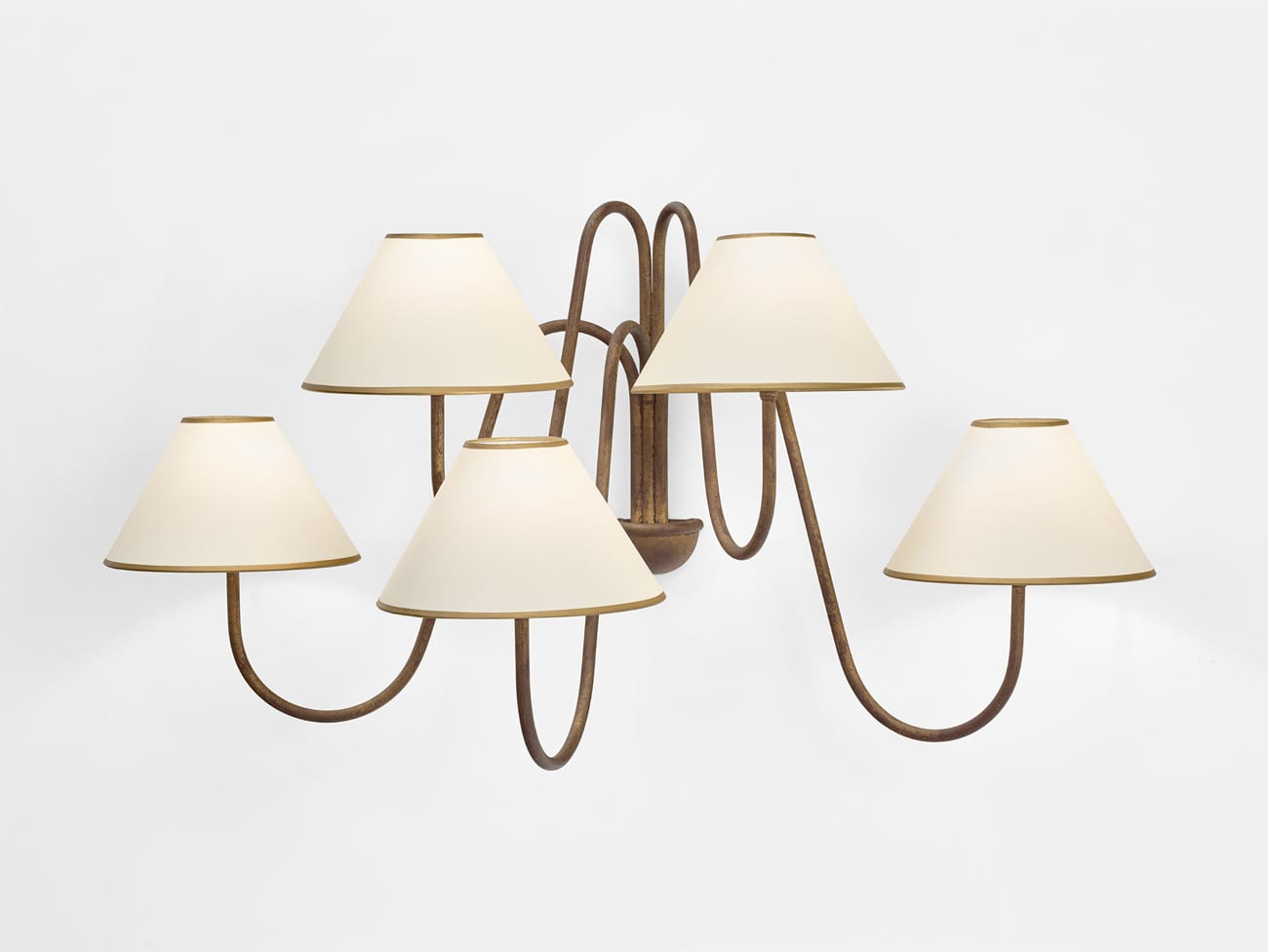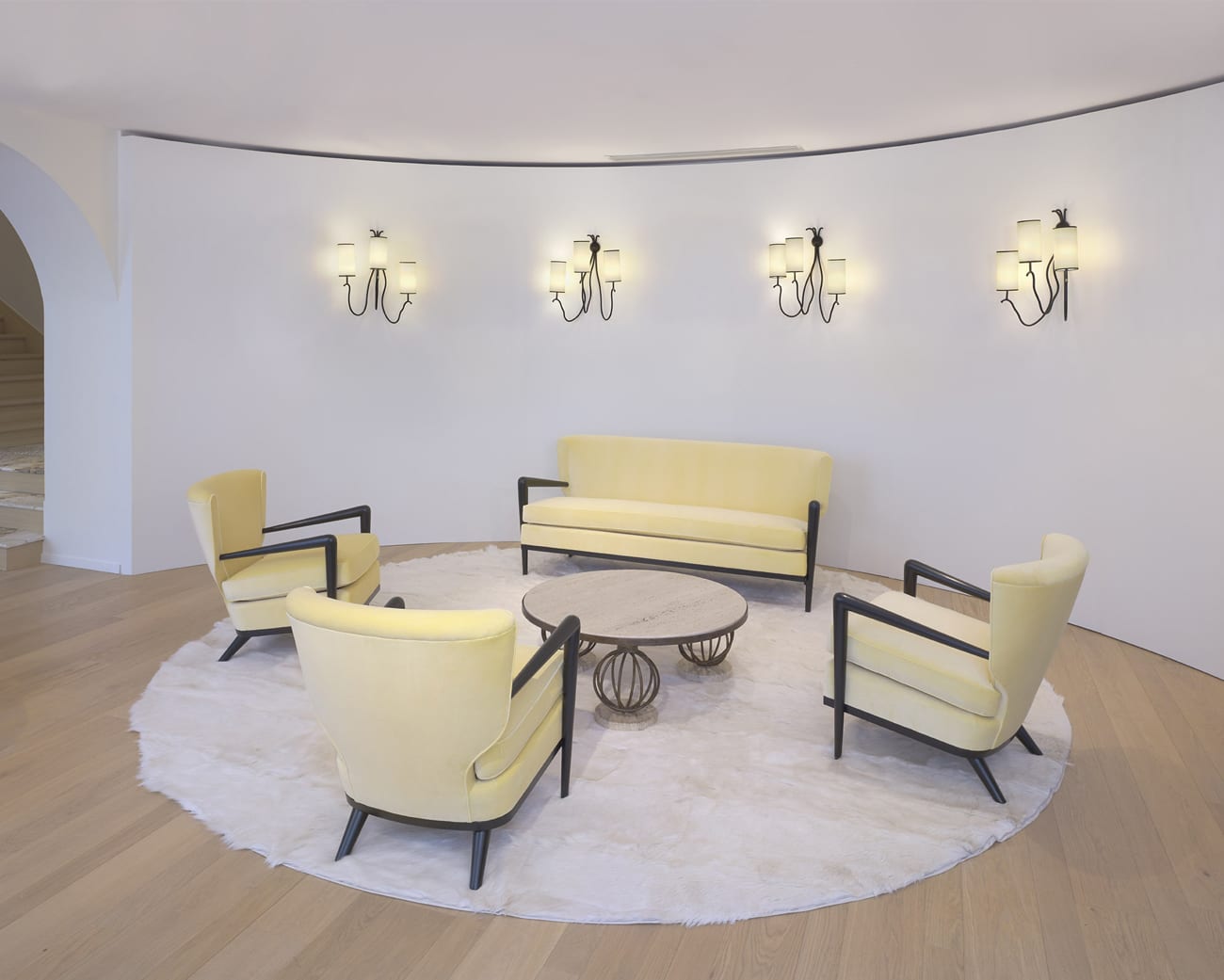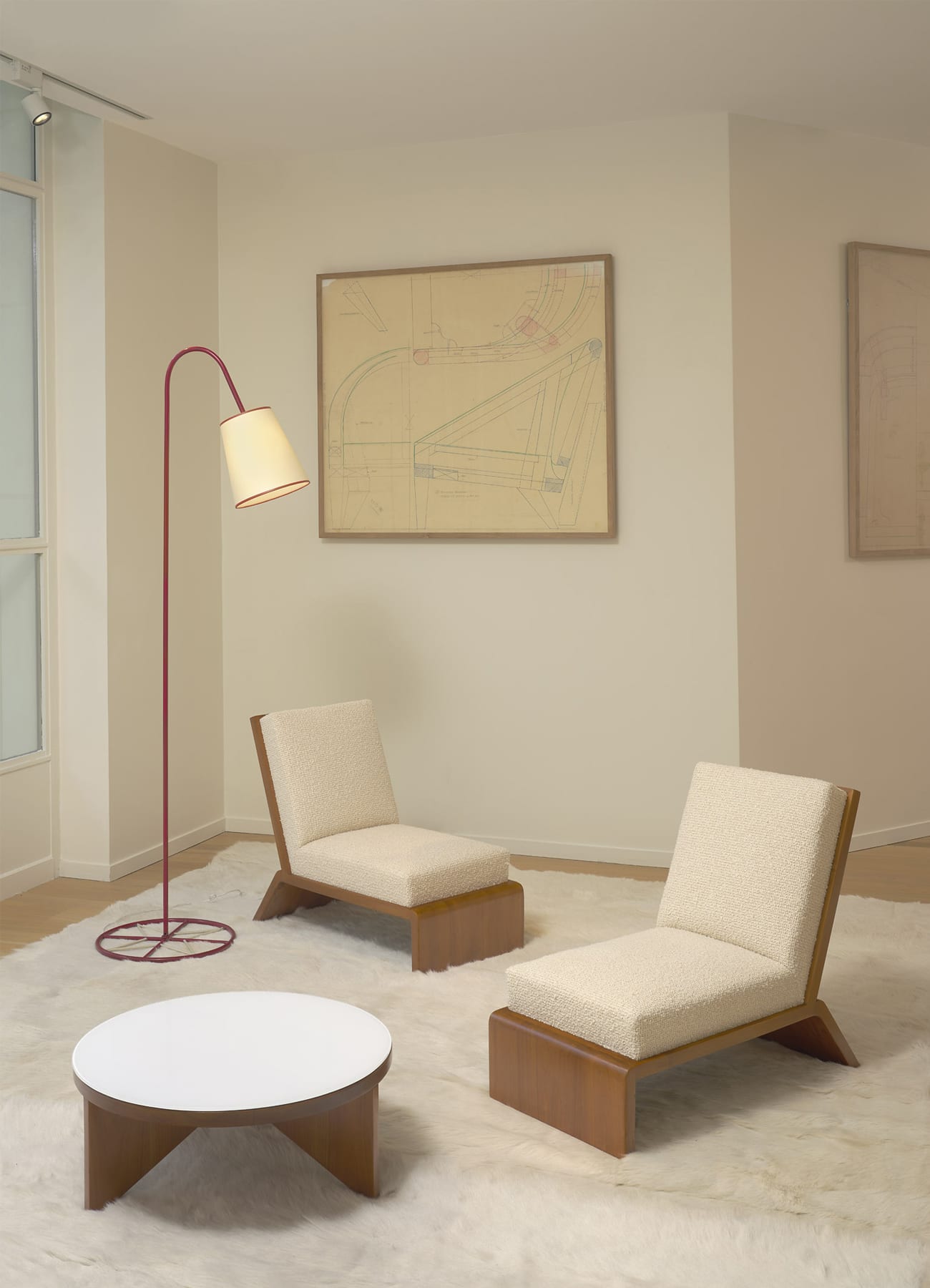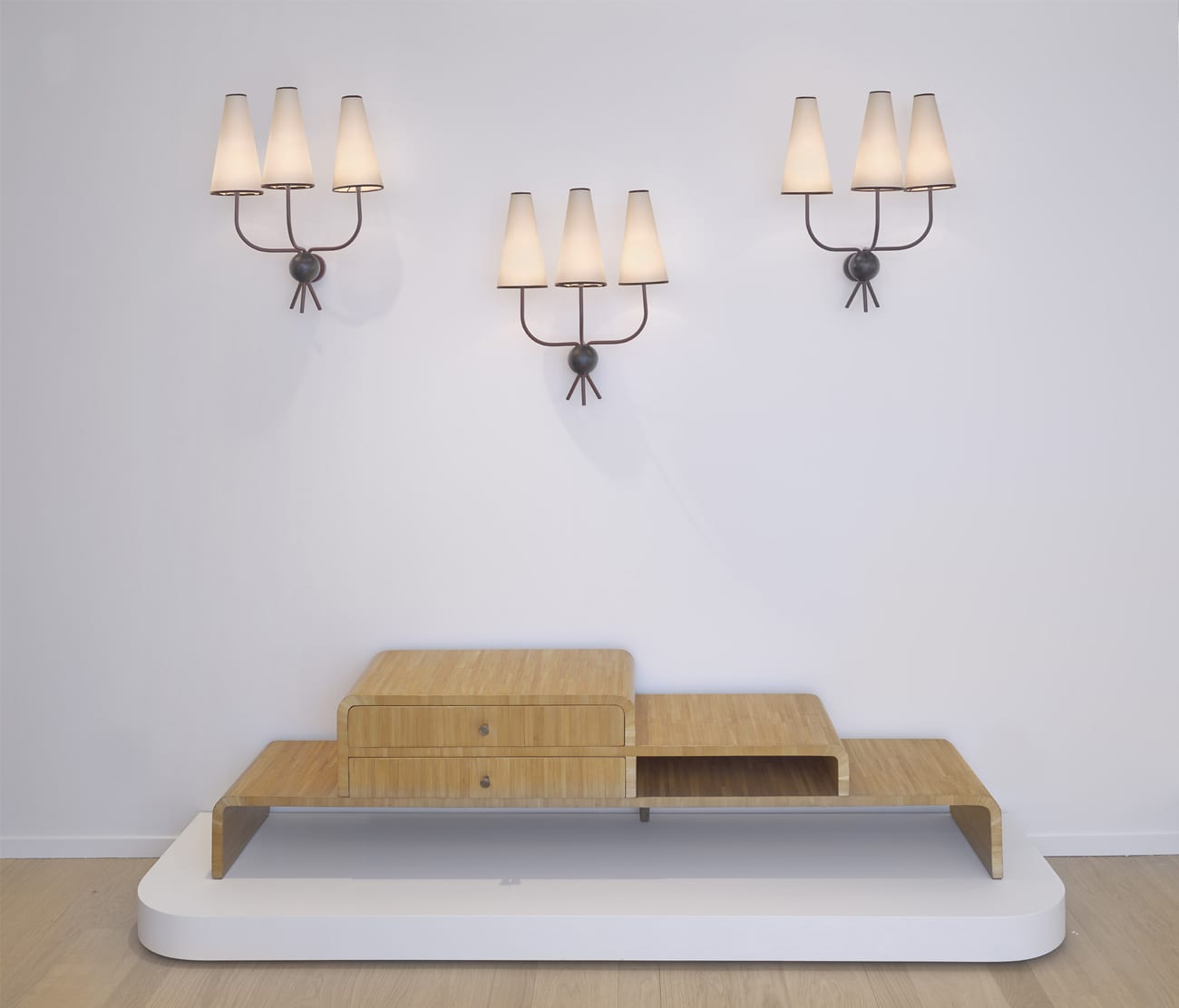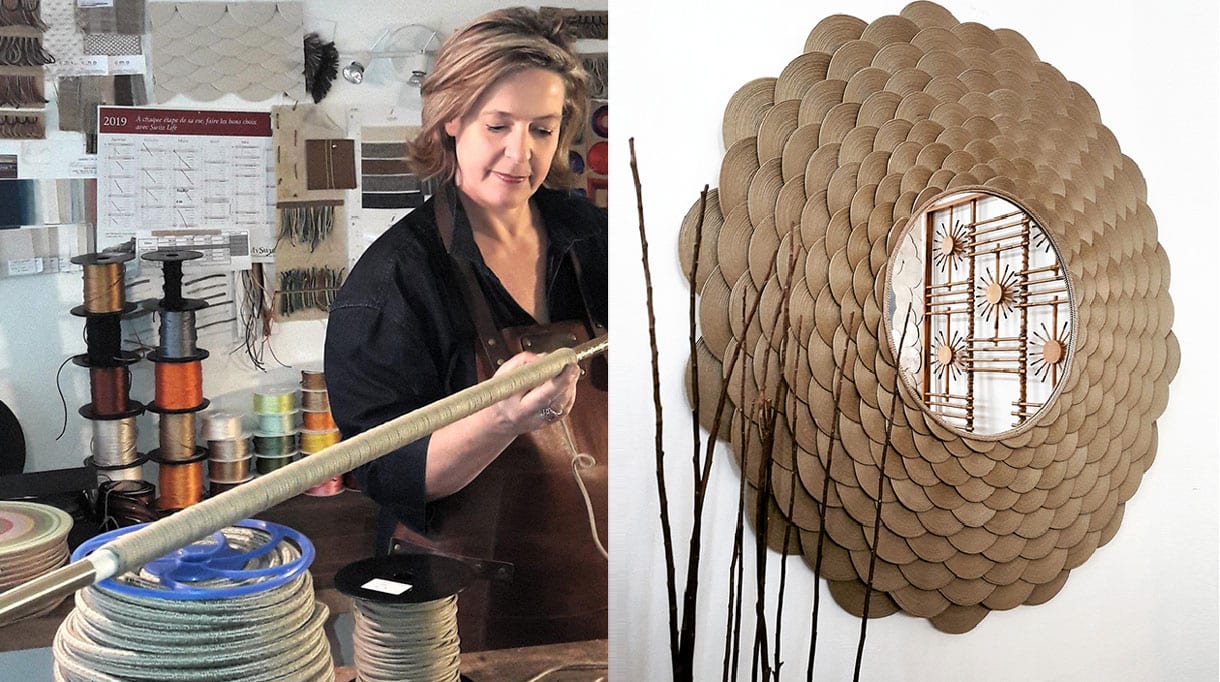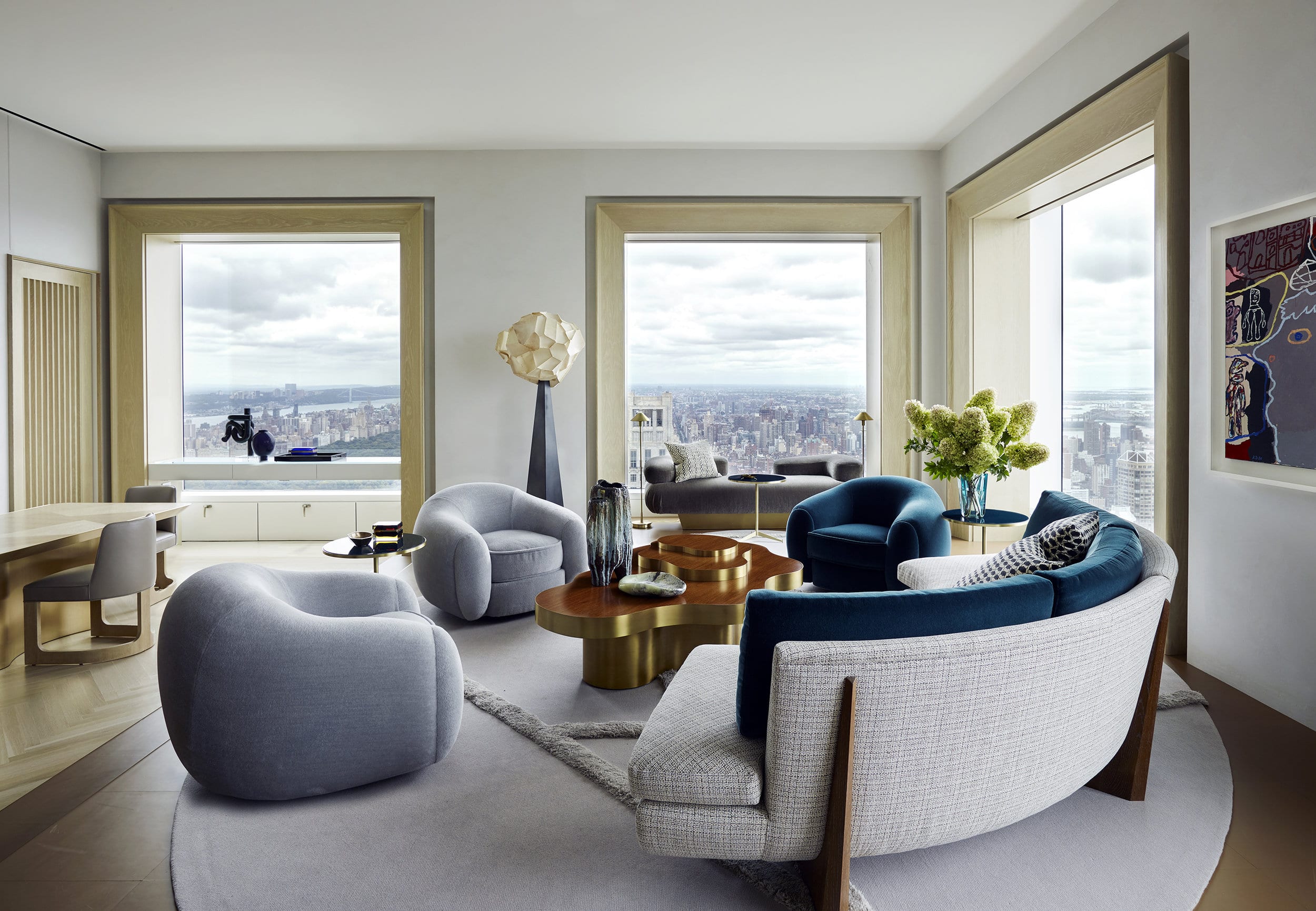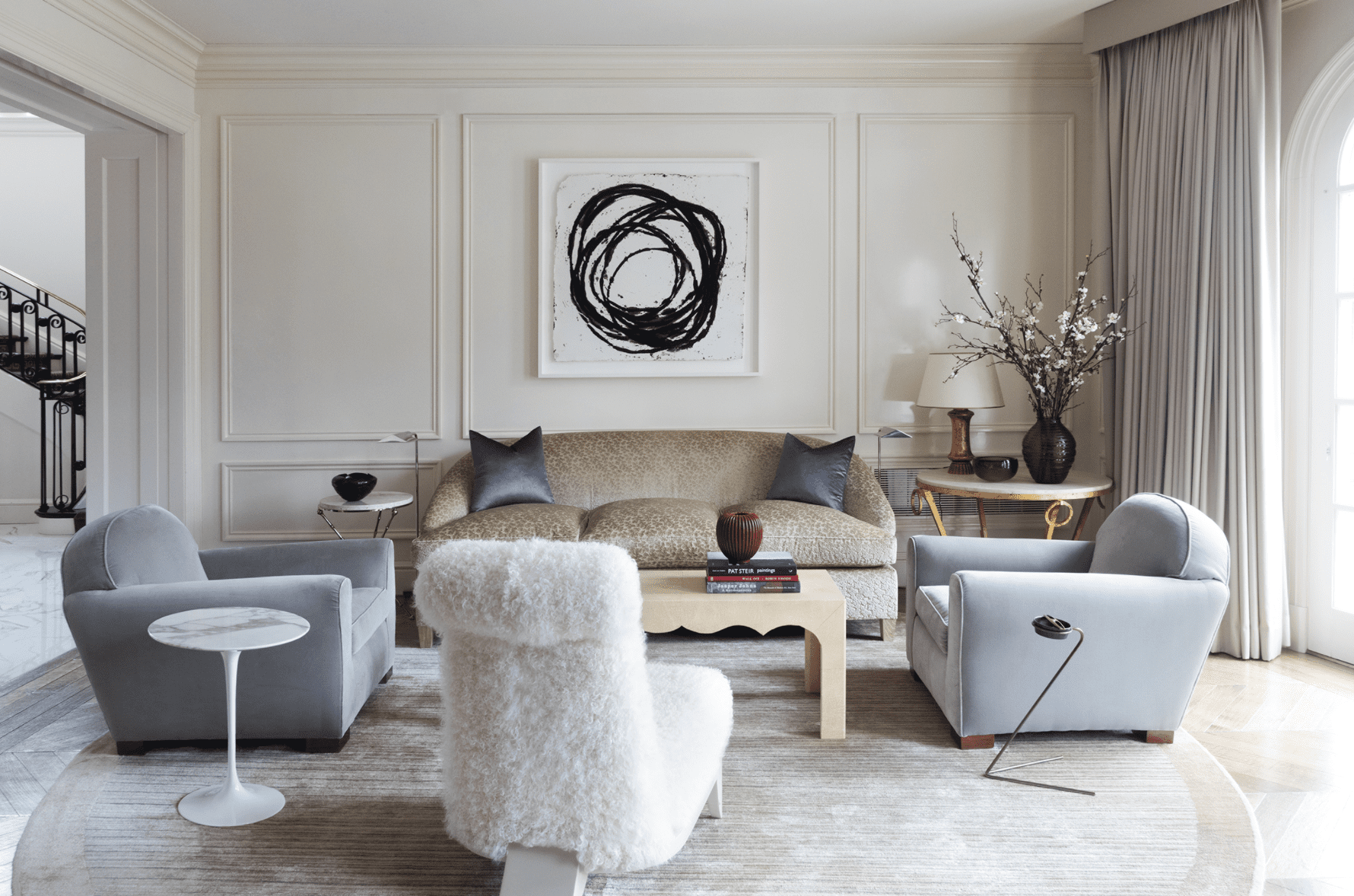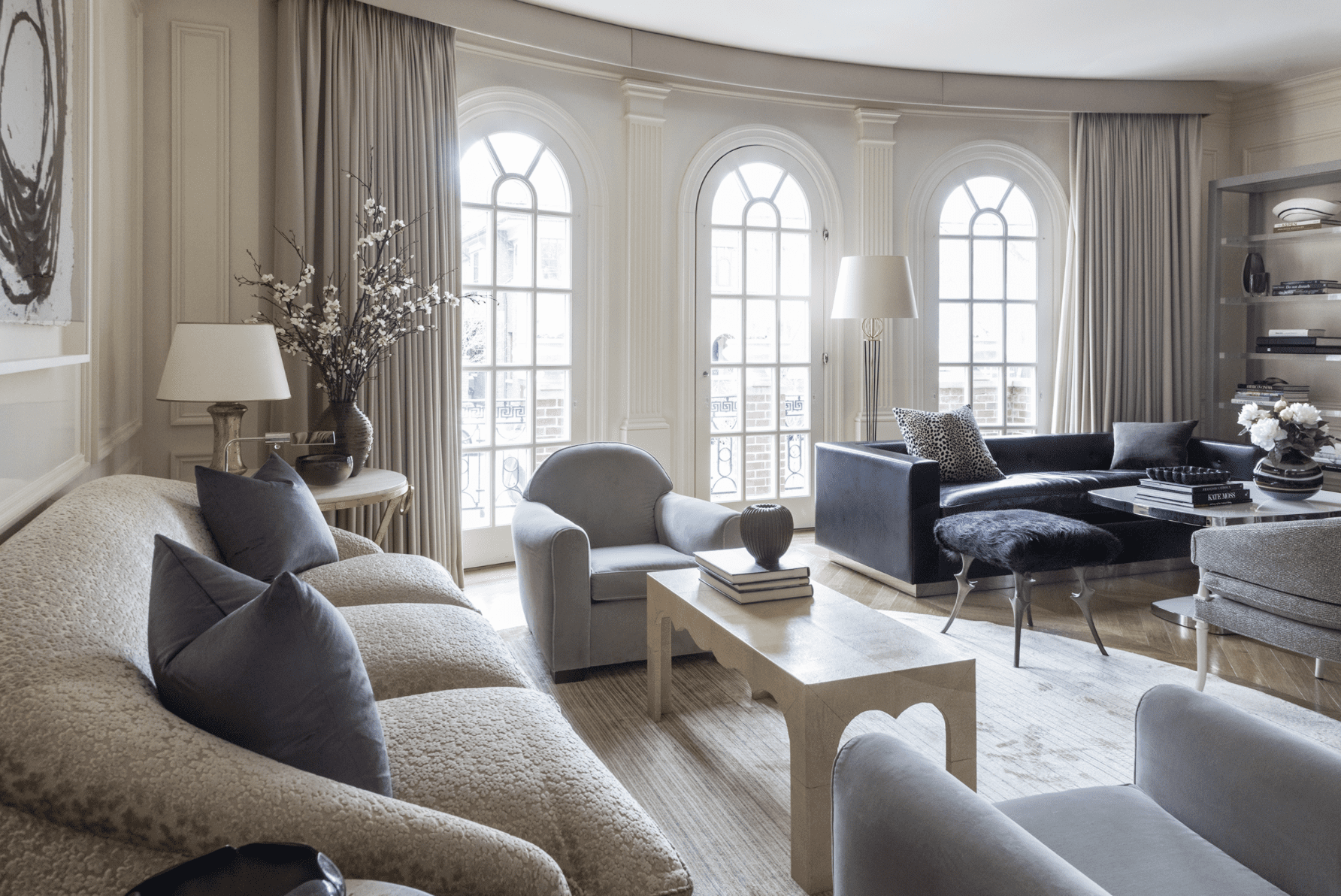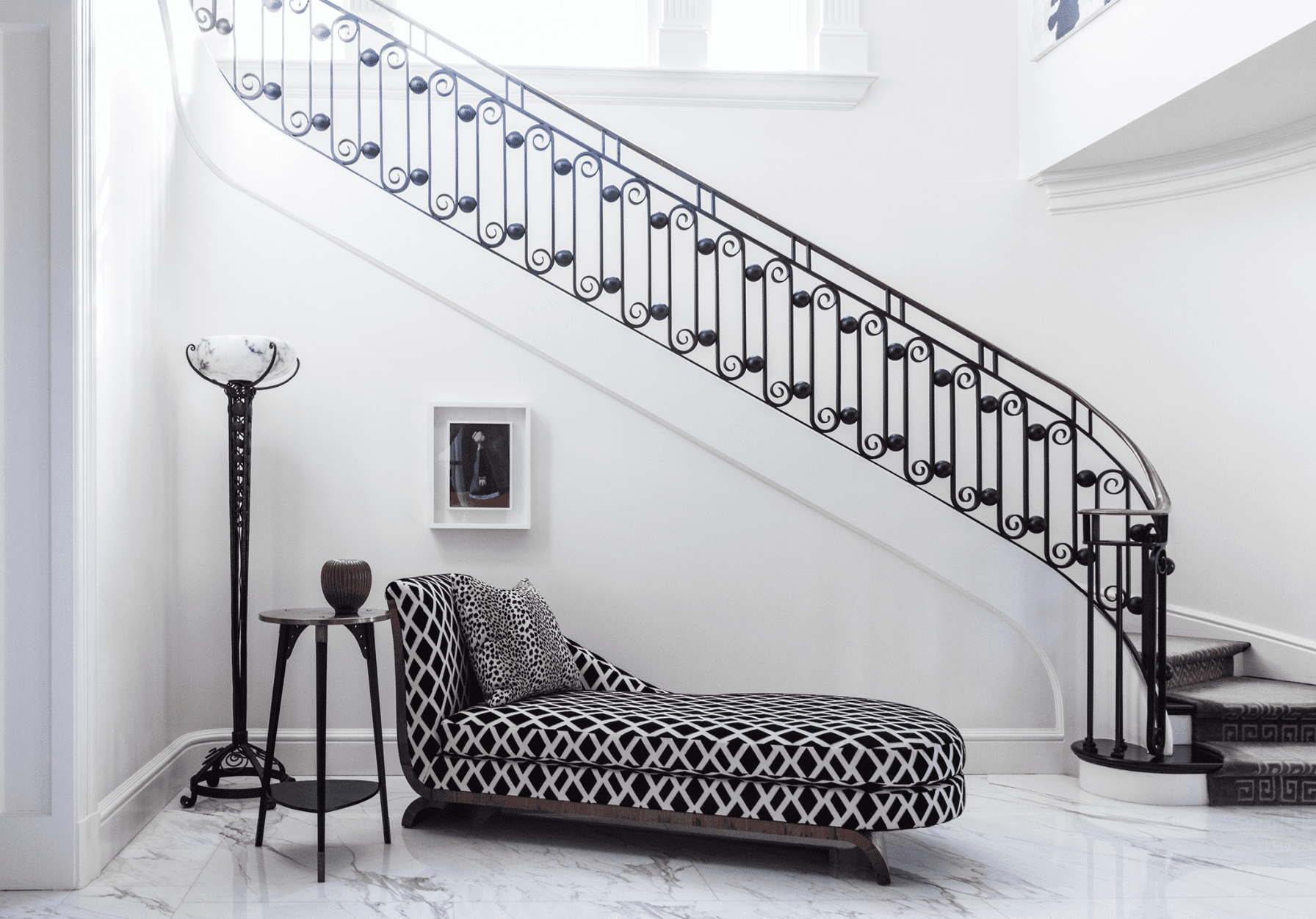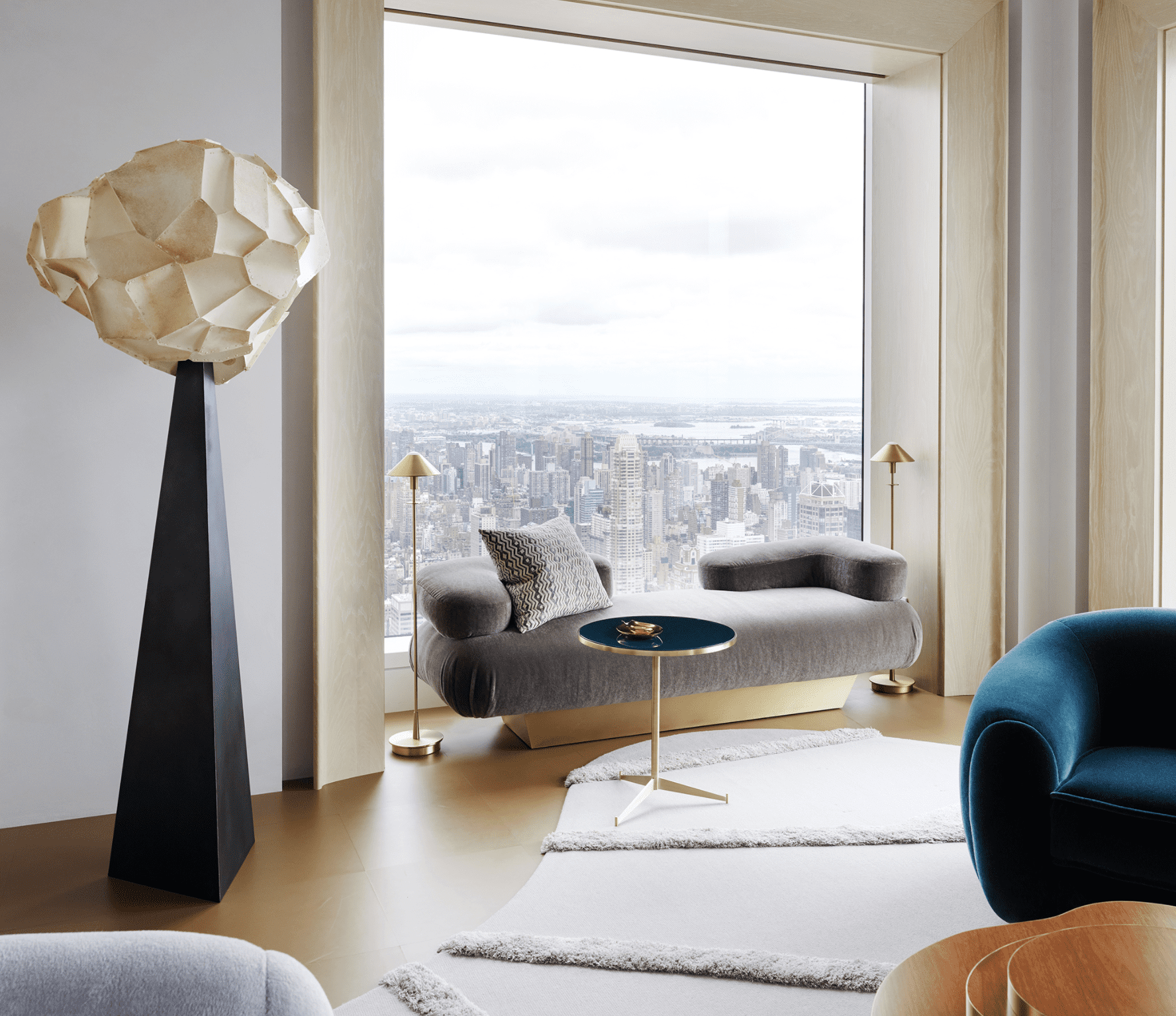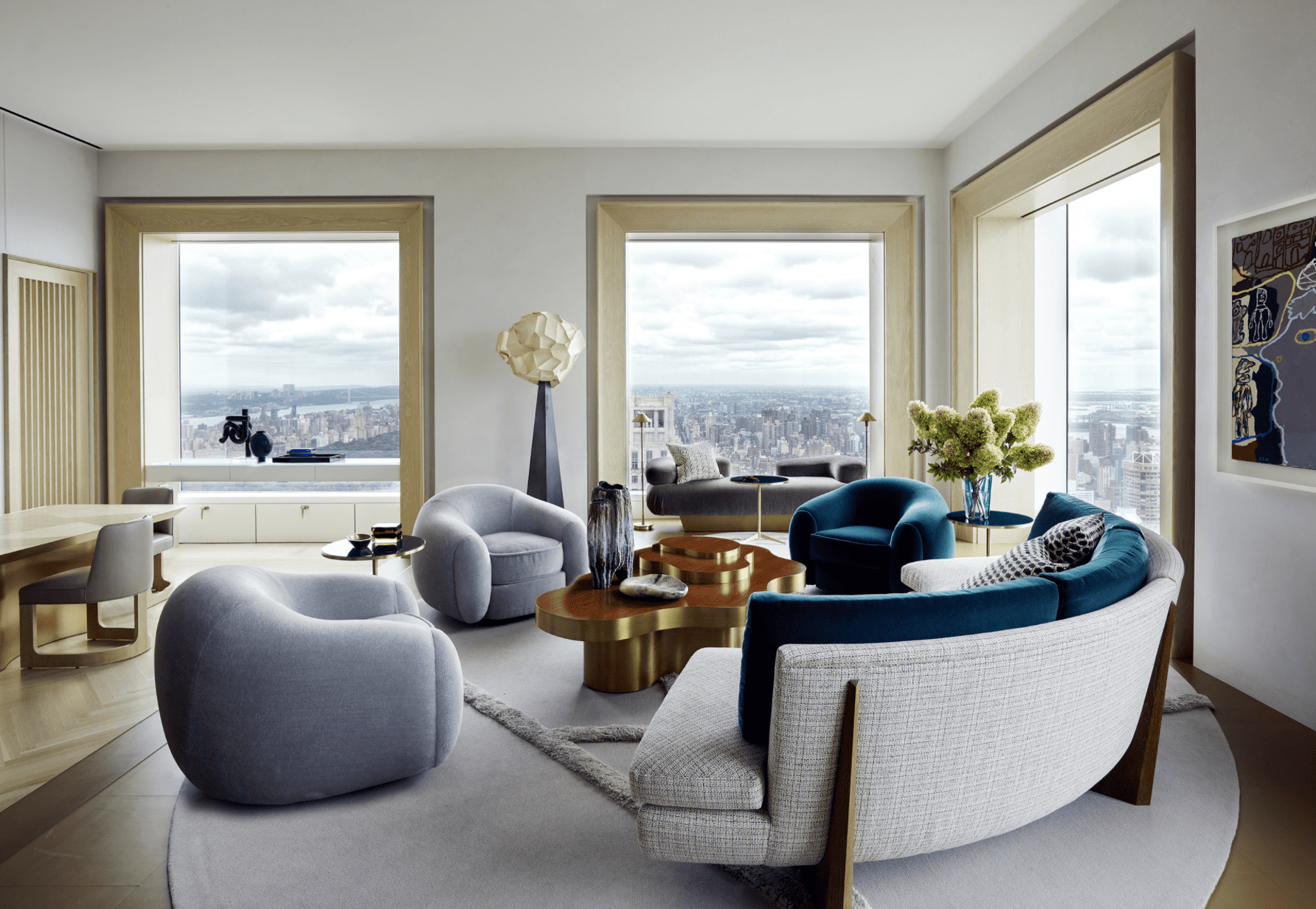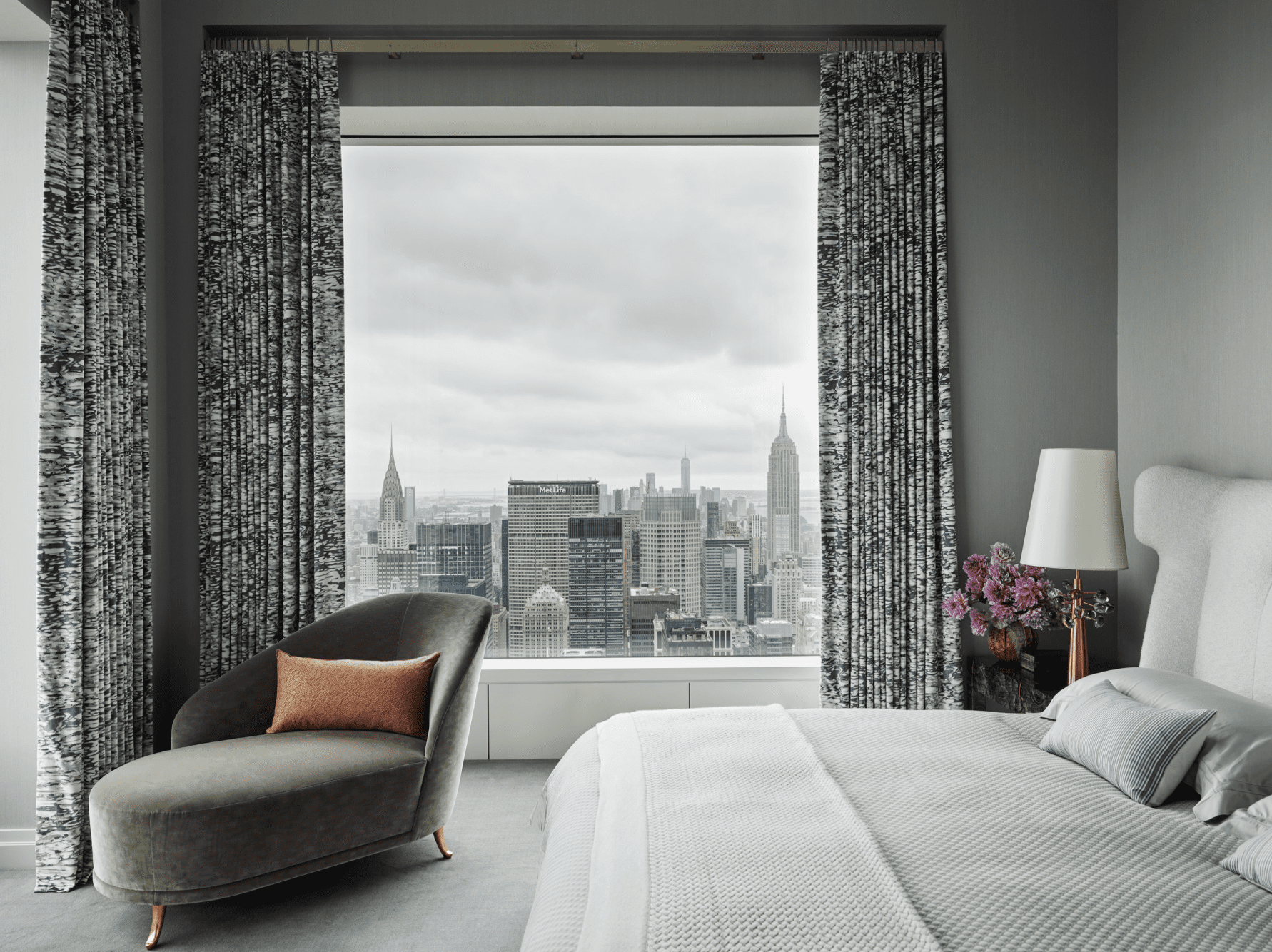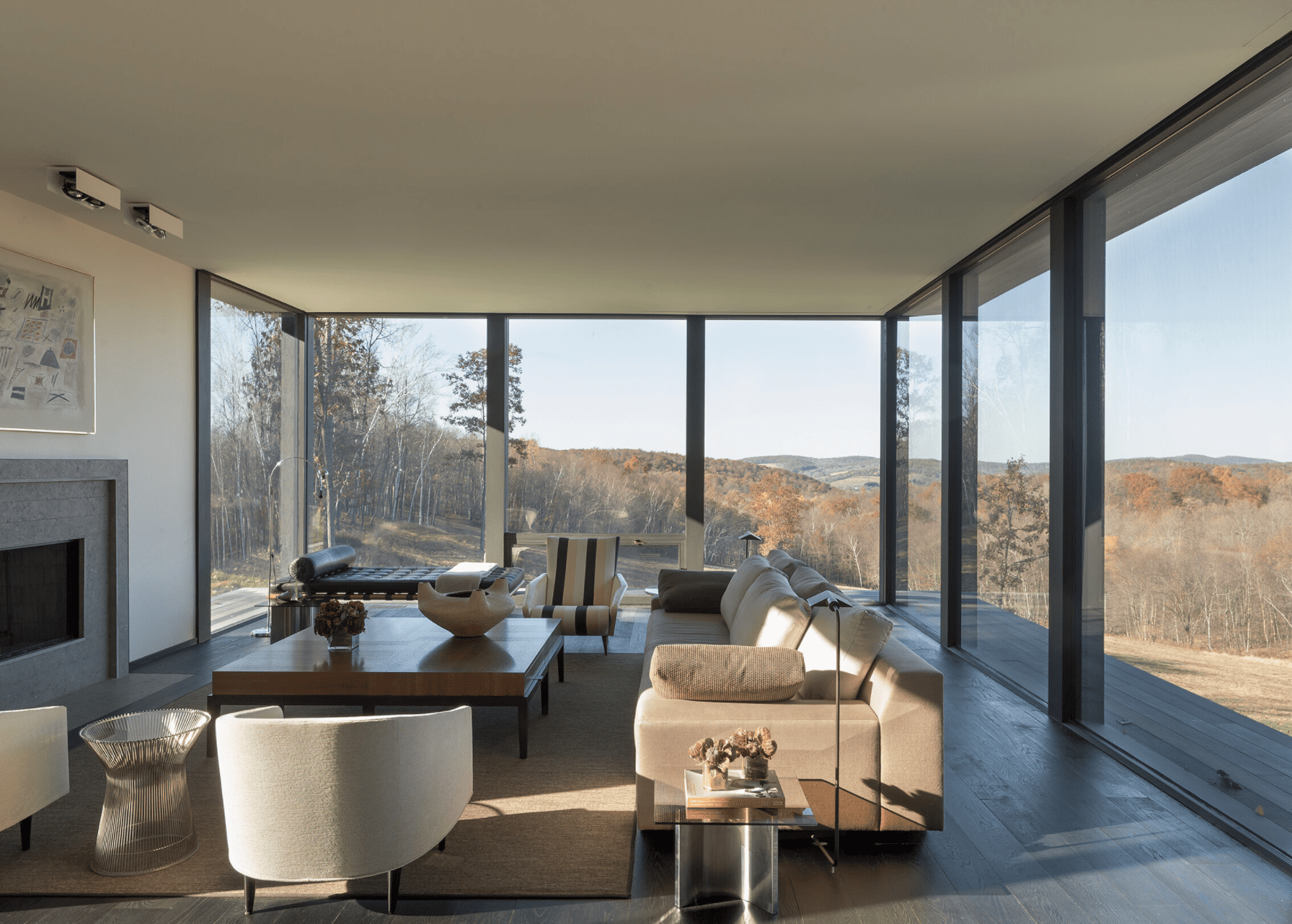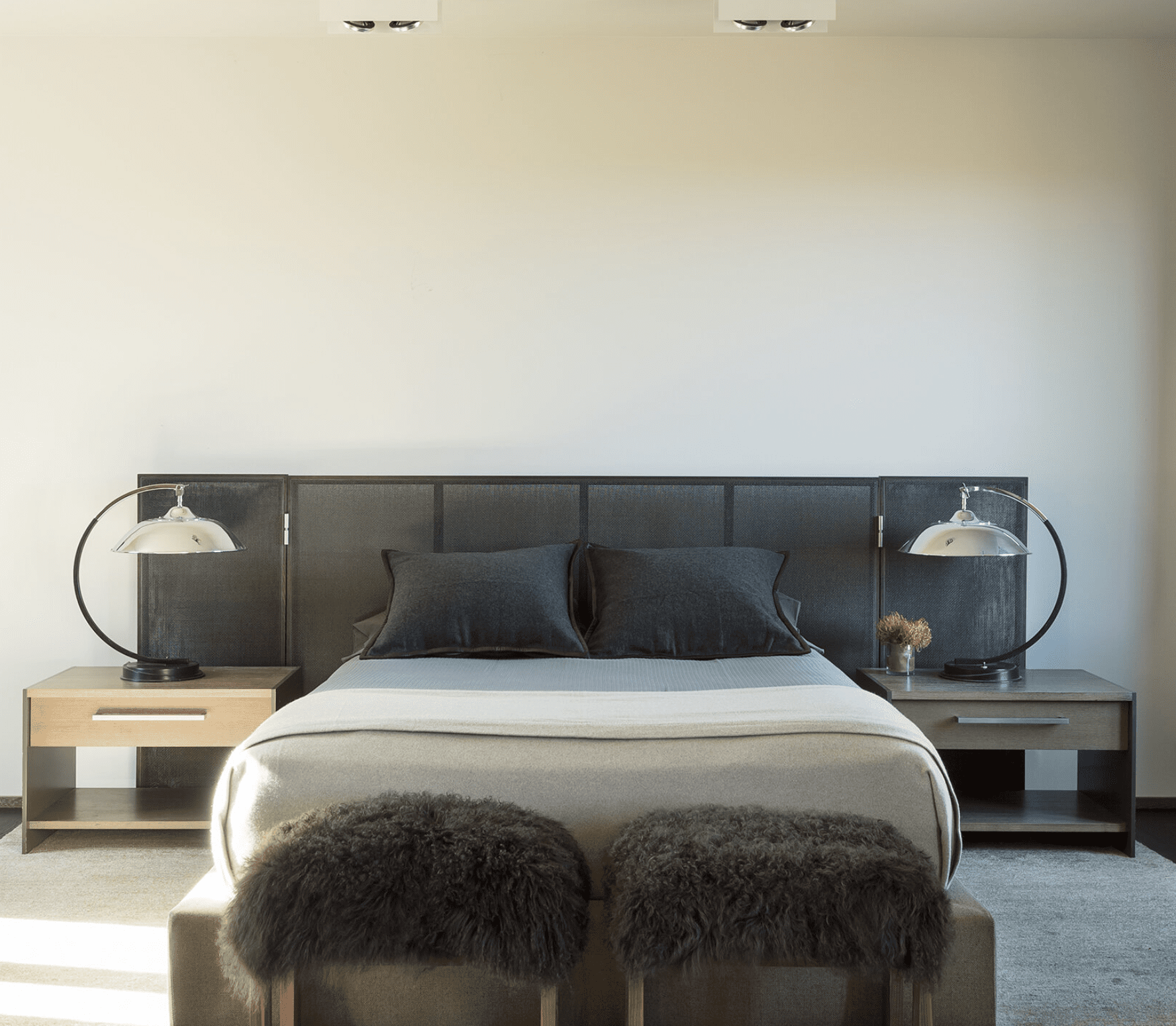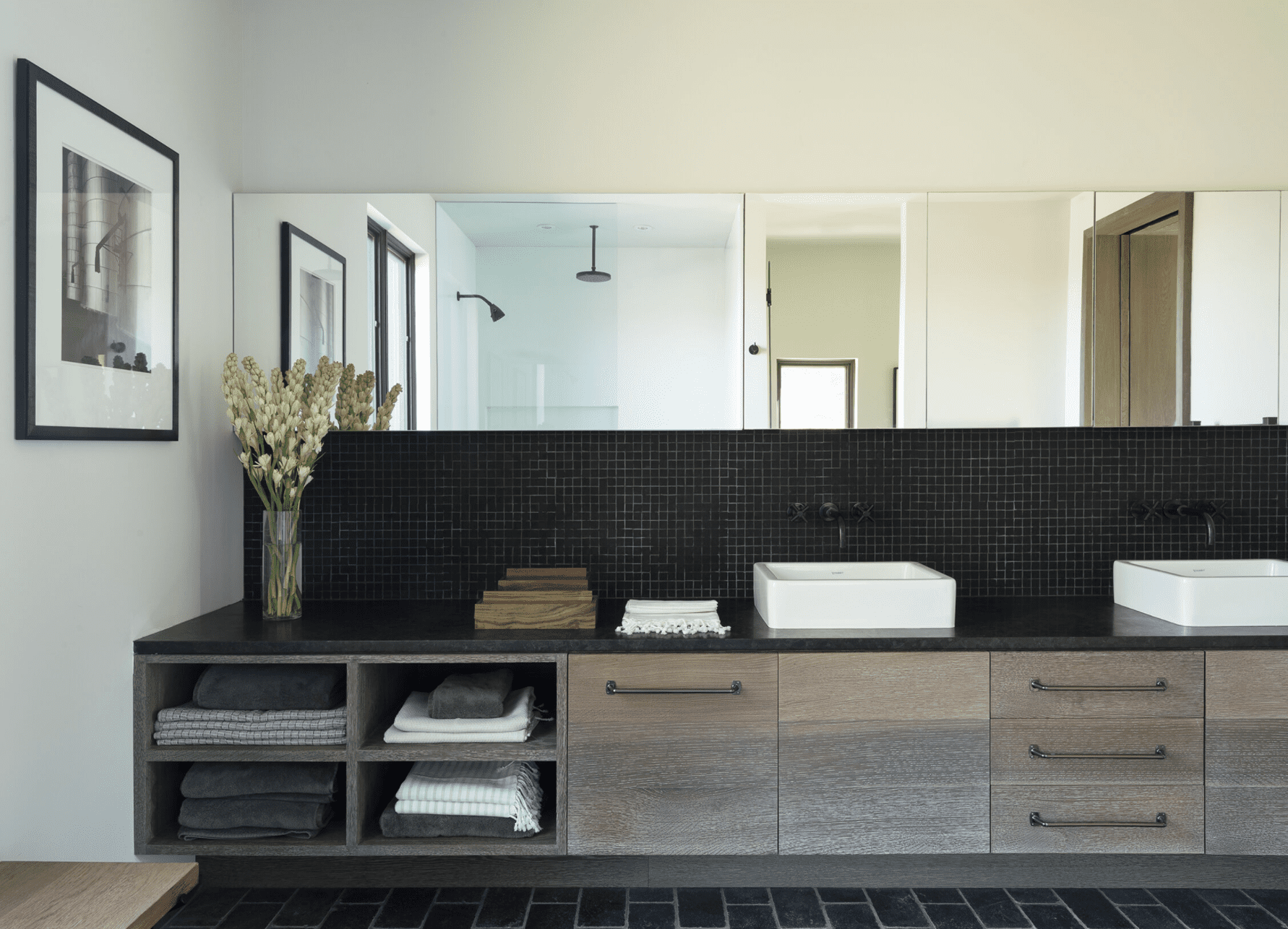Jean Royère - an elegant and unconventional designer
While the current health crisis still prevents us from traveling, we offer you on a virtual visit of the Jean Royère exhibition at Galerie Jacques Lacoste, Paris.
Jean Royère [1902-1981]
Initiator of a unique, elegant and unconventional style, Jean Royère established himself as one of the greatest decorators of the 20th century with iconic creations.
At the age of 30, Jean Royère turned away from a career in the import-export trade to dedicate himself to his true vocation: interior design. He started in a furniture factory in order to learn the job and train. His first ever design was a set of slimline furniture for his uncle, Jacques Raverat.
The renovation of the Hotel Carlton’s brasserie on the Champs Elysée brought Royère into the spotlight and helped establish him as an emerging figure. In 1934, Pierre Gouffé, a noted Faubourg Saint Antoine furniture manufacturer, noticed Jean Royère and put him in charge of his firm’s contemporary furniture section.
At the 1937 Exposition Universelle, Royère was recognised as one of the most important decorators of his time. Royère developed a new repertoire inspired by animals and vegatals. The Elephanteau armchair, the Trefle chair, the Champignon lamp and the Bouquet sconce are emblematic of this period.
In 1949, Jean Royère opened his own gallery in Paris, rue du Faubourg Saint Honoré. Throughout his life, he traveled extensively and opened galleries in Cairo (1946), Beirut (1947), Lima (1955), São Paulo (1959). He was very popular in the Middle East and carried out many prestigious orders for King Farouk of Egypt, the Prince of Arabia, King Hussein of Jordan, and many other.
What defines its work is his boldness, his curiosity and constant innovation. Royère innovated by proposing a luxurious creations without ostentation. He was always playing with proportions and bringing bright colors in his interiors. His most memorable work was often considered whimsical or eccentric, featuring unusual elements such as furry armchairs and curly table legs.
Jean Royère died in 1981 in New York City one year after moving there. The Museum of Decorative Arts in Paris held a museum to show his work in 1999, and a posthumous retrospective took place in New York City in 2008.
Jean Royère exhibition – Galerie Jacques Lacoste, Paris
From 20 November 2020 to 30 January 2021
Ever since its opening in 1986, Galerie Jacques Lacoste has been dedicated to the reappraisal and promotion of 20th-century decorative arts, promoting French designs from the 1930s up until the 1950s.
With an extensive archive comprising over 10,000 documents, Galerie Jacques Lacoste continuously pursues its research on Jean Royere’s work, for which the gallery is the ultimate reference. The gallery has contributed to revealing Jean Royère’s innovative spirit and decorative fantasy through constant research all around the world. The Galerie unveiled on several occasions incredible exhibitions and publications.
In 1999 the gallery dedicated its first exhibition to Jean Royère, and in 2008, Jacques Lacoste was invited by the Sonnabend Gallery in New York to present a selection of 80 exceptional pieces by the decorator alongside Galerie Patrick Seguin. Then, in 2012, Jacques Lacoste published a two-volume-set book on Jean Royère in collaboration with Patrick Seguin. A few years later, Galerie Jacques Lacoste hosts once again an impressive exhibition highlighting Jean Royere’s most prestigious creations: the Polar Bear armchair and the Creeper sconces, a straw marquetry Puddle coffee table, a Persian floor lamp, a Herringbone set (sofa and chairs) and Swallow sconces. With more than 60 pieces on display at the Galerie Jacques Lacoste, this exhibition is an opportunity to discover or re-discover the formidable creative fibre of this design icon.
For Jean Royere’s admirers who can’t make it to the exhibition, we invite you to discover the video of the exhibition online : Jacques Lacoste
From 20 November 2020 to 30 January 2021
+33 (0)1 42 89 11 11
Véronique de Soultrait - the passion of the ropes
Véronique de Soultrait makes up a new know-how: the molding of the rope to create unique wall decorations. Absolute masterpieces for interior decoration, it is with admiration that Signatures Singulières Magazine makes you discover this goldsmith work.
Above: Véronique de Soultrait in her workshop – ©Pierre Salagnac – “Fleur” mirror made of rope marquetry.
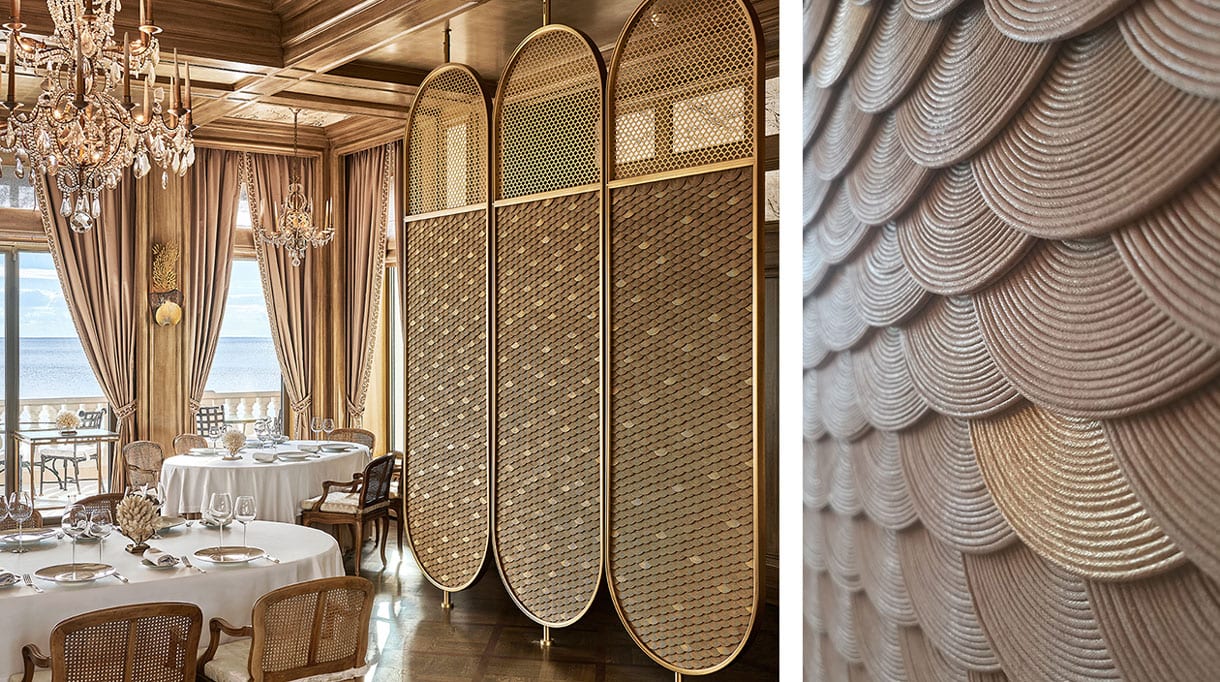
Eternal creative, Véronique de Soultrait knew since she was young that she wanted to work with her hands. In the eighties, she convinced her parents to let her join the Beaux-Arts in Lyon and she studied courses in painting and textile drawing. Quickly, she nourished a deep admiration for the work of the hand and claimed a certain loyalty to ancestral know-how in general. At the time, she conceives beauty and expresses herself as a decorative painter with her hands, however the task is arduous. She stops and goes towards a less physical creative activity, the macramé. One thing leading to another, Véronique de Soultrait starts to work on ropes. She launches a collection of cushions based on a macramé technique that she presents at the Maison & Objet fair. It was not a great success, but it did not discourage her from pursuing her passion.
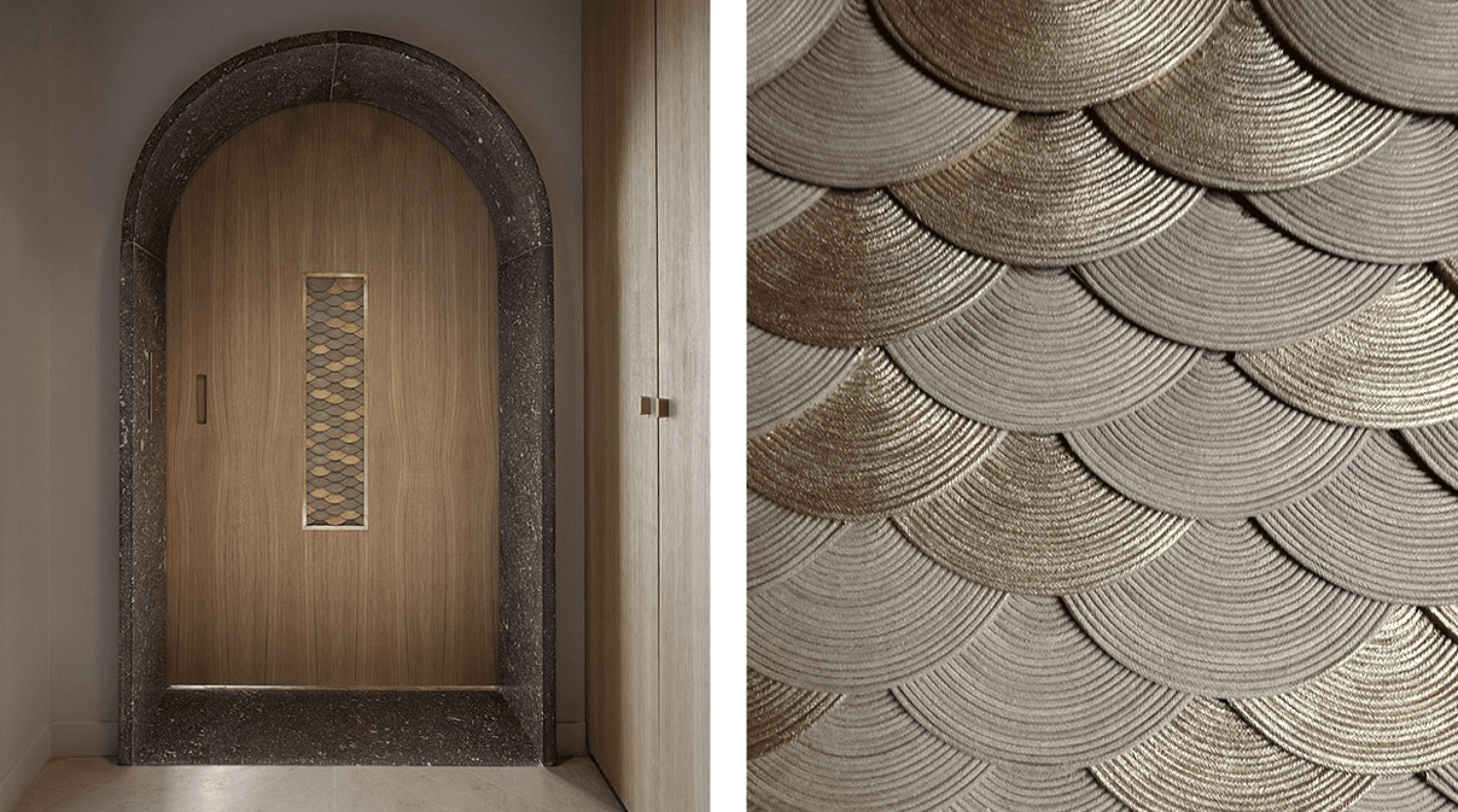
Wall decorations
Véronique de Soultrait then decides to use this technique, which allies thread and rope, but this time on a wall support. Not only is she getting closer to her first love, but she is also inventing a new creative technique: creating wall decorations with ropes. Passionate about braiding techniques, she creates unique pieces for high decoration in her workshop in Lyon, such as wall panels, door covering, headboards, screens, mirrors, bedside tables or lamp bases, drawers, door handles etc. The applications are numerous. Véronique de Soultrait rolls, winds, stretches, dyes and waxes the rope to create unique decorations on a wooden support. She plays with materials and textures. The ropes and colors roll up and intertwine meticulously – like marquetry – under her fairy fingers. Each creation is customized to fit every project.
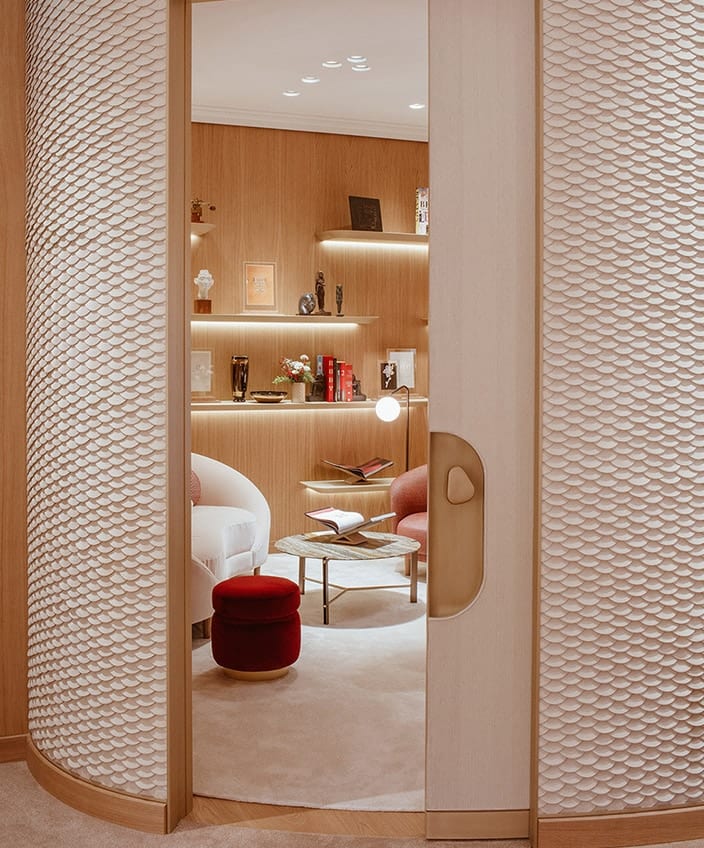
A taste for unique decoration
Passionate about her craft, Véronique de Soultrait gets into this new profession by following her instinct. As a new “cordelier”/ rope worker, she applies ancestral know-how to design and interior decoration and perseveres to make people discover her trade. She contacts great decorators such as Jacques Garcia or the Cabinet Alberto Pinto who fell in love with her work at first sight. The feedback is encouraging and Véronique continues to work her technique until she gets her first order.
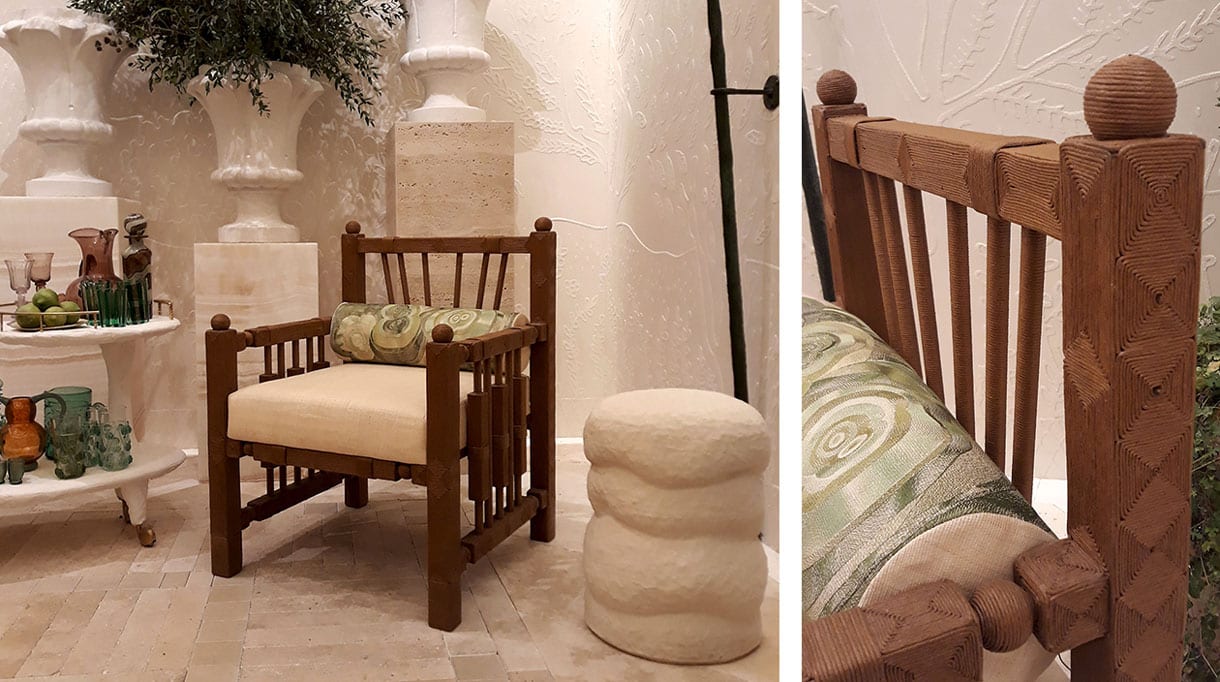
At the beginning, she only creates black decors. She goes to the essentials of graphic design. Her work is very rigorous and demanding. The purity is paramount. What she does not want at all is to fall in an ostentatious luxury. To do so, Véronique is inspired by ethnic motifs or the thirties, she stylizes and magnifies them. Then, as creations go by, the color integrates very gently. Véronique de Soultrait dyes her ropes in her workshop to create personal and unique shades that are very subtle.
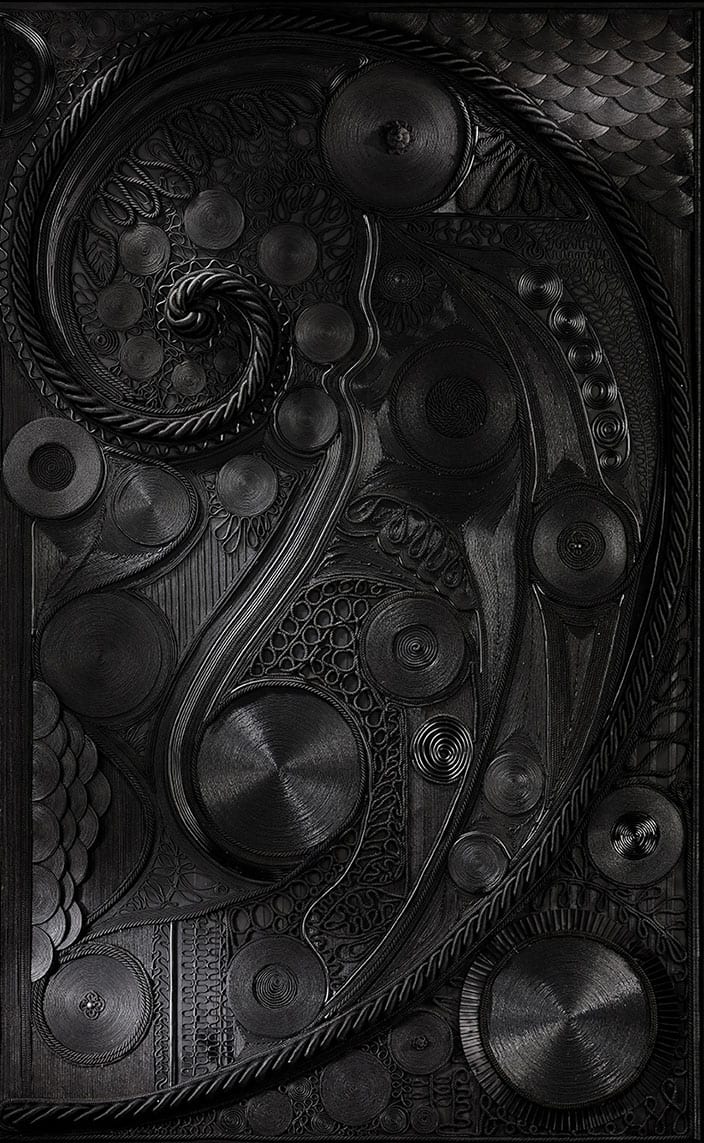
The art of taming the material
As a very meticulous craftsman, Véronique de Soultrait takes care of every detail, from the design to the choice of materials. The range of worked ropes is very wide, from the most untreated to the most precious like gold threads. For each realization, the most appropriate ropes are selected. As for the patterns, they are designed with more or less dense braids and can integrate fabrics for backgrounds. Each realization is made by instinct.
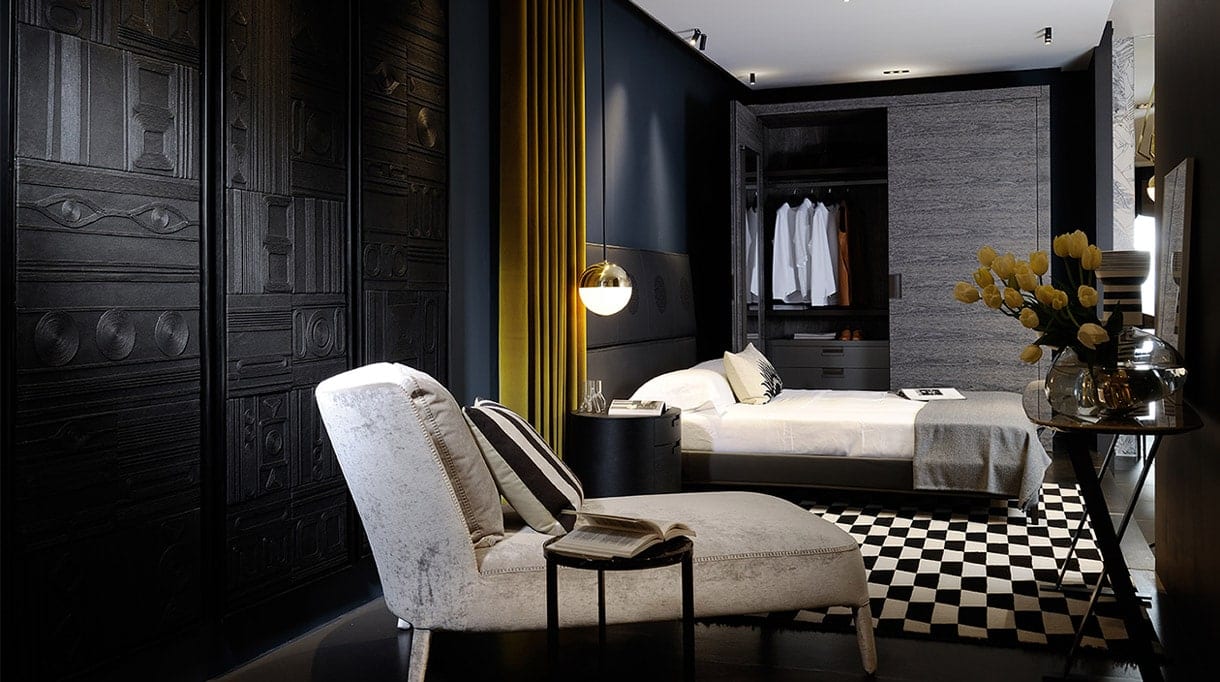
The dialogue with material
Véronique maintains a deep connection with the rope, a material that she considers both “sensual, soft, spiky, mat and shiny” and “that bends to your desires”. Within the limit of the material, she creates raw, natural and sophisticated decorations. More than a paradox, it is a richness, that also characterizes her personality, a creative instinctive who shapes for hours barefoot in her workshop. Solitary and yet so spontaneous, so radiant. Natural and simple, yet creating works for such a luxurious clientele. A truth, a know-how that goes beyond appearances. And this is surely what makes the beauty of these works.
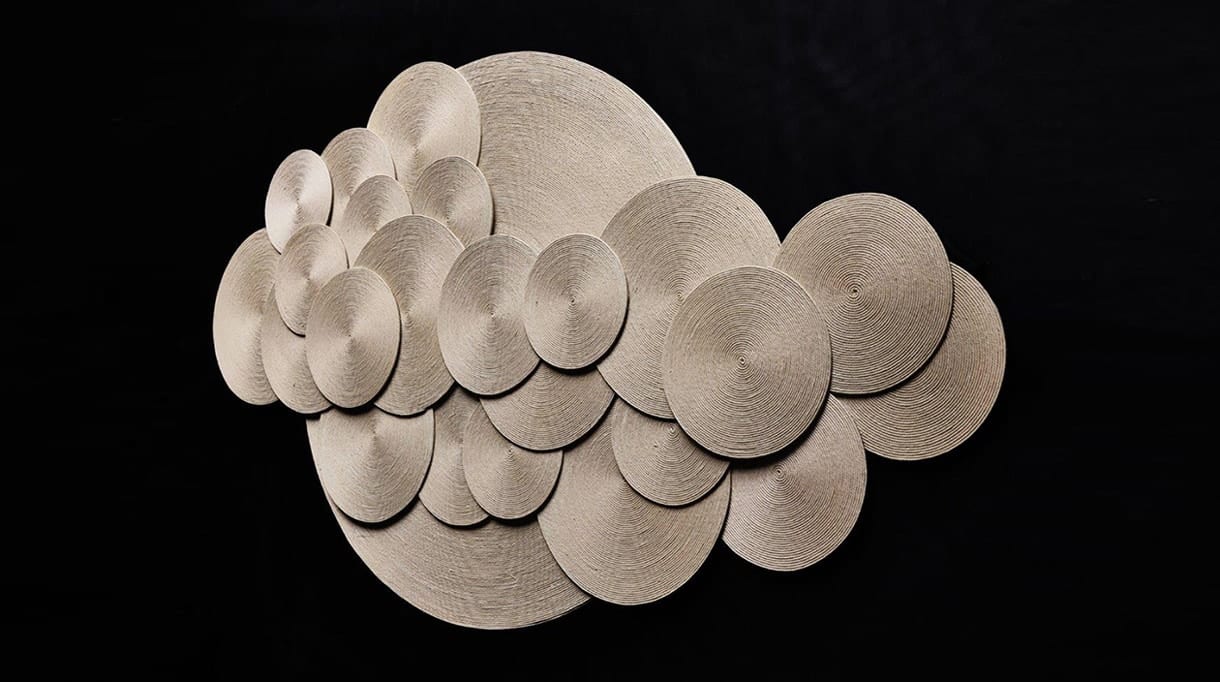
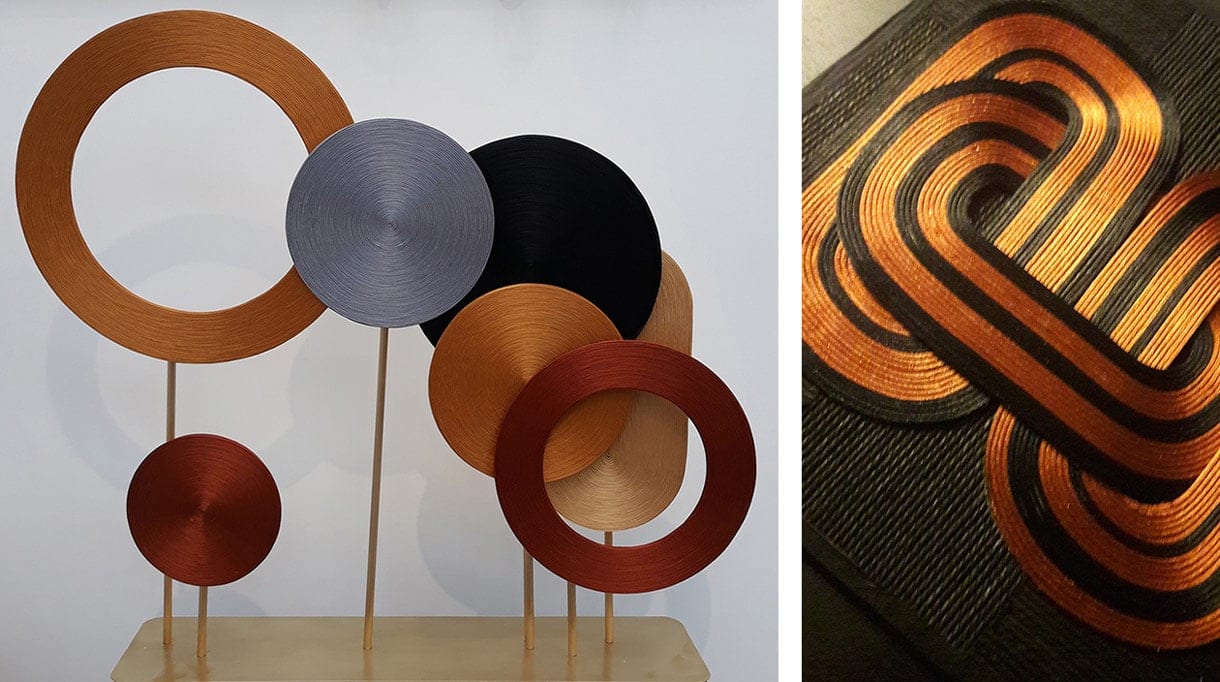
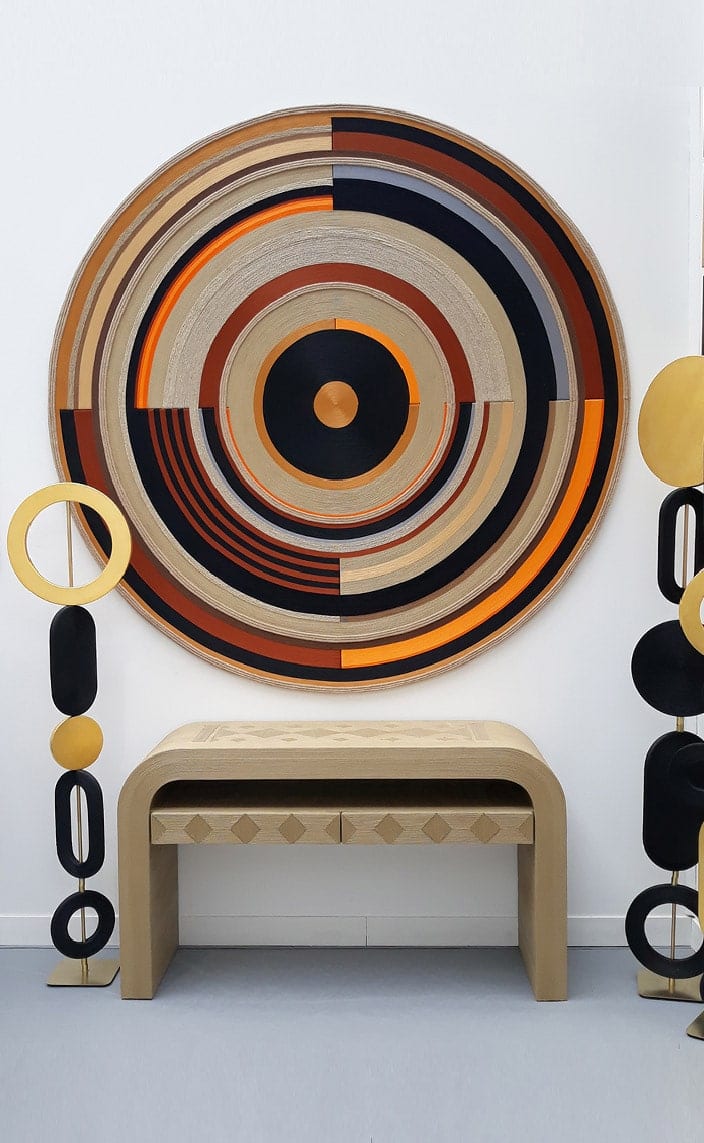
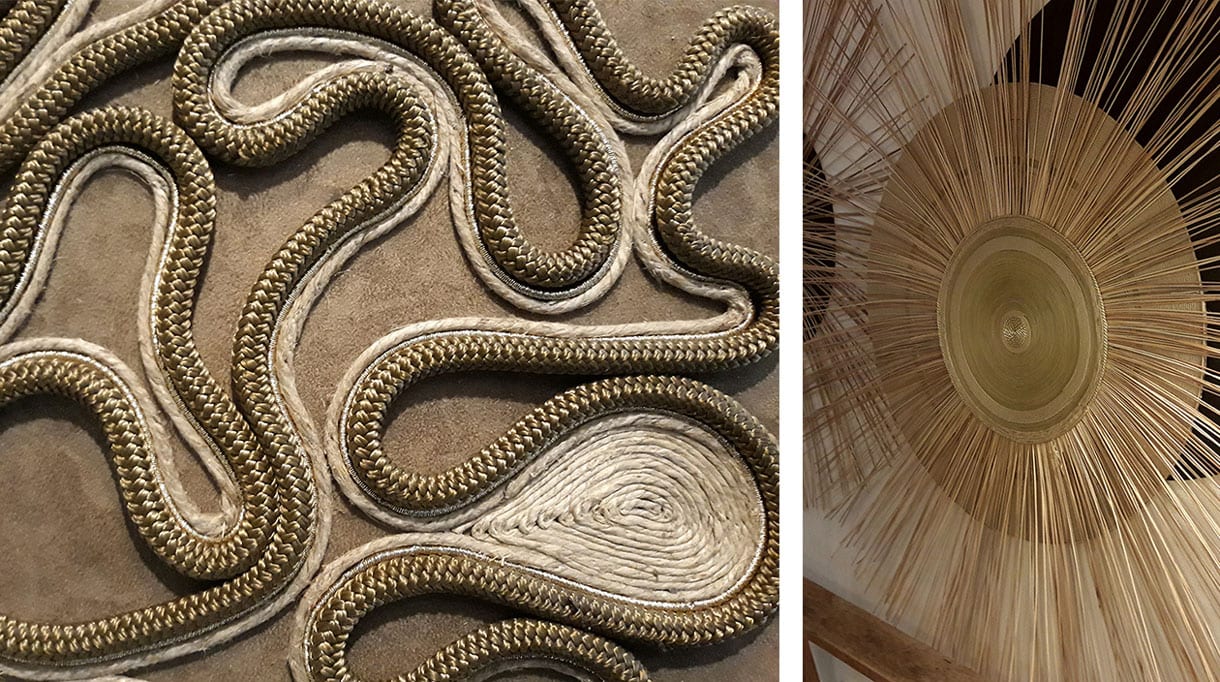
Véronique de Soultrait
162, rue Vendôme
69003 Lyon
Tél. : +33 (0)6 75 70 18 35
www.veronique-de-soultrait.com
Share
"What Inspires Me" with William McIntosh
Featured image: 432 Park Avenue, NYC. Design by William McIntosh Design.
William McIntosh established his namesake firm in 1990. With a team of dedicated professionals including Architects, Designers, Artists, and Craftsmen, McIntosh and Raffone have completed elegant and luxurious interiors all over the world.
Individually and as a team, McIntosh and Raffone have been featured in many world-renowned publications including Architectural Digest, Departures Magazine, Elle Décor, Palm Beach Cottages and Gardens, Traditional Home and numerous others.
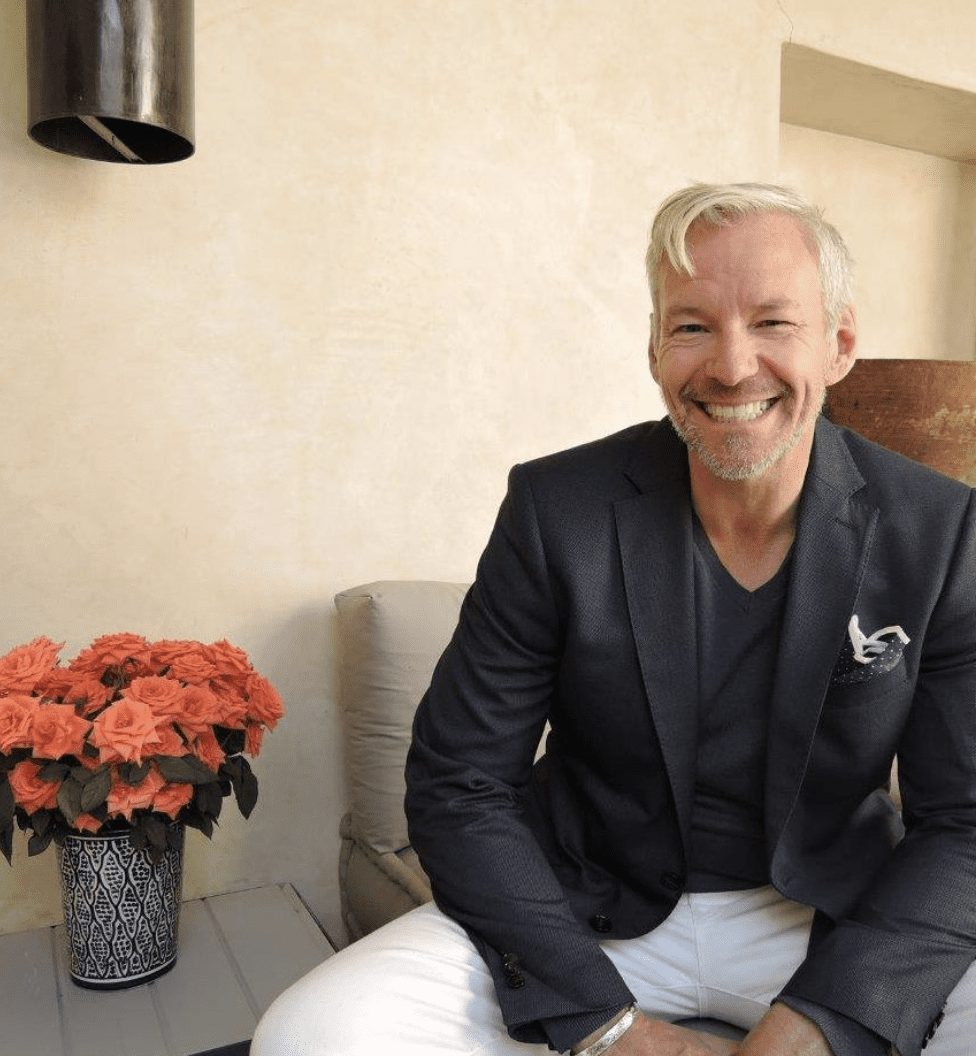
Born upstate New York, William McIntosh was quickly spotted by his High School Art teacher, who saw great potential in him. “I was always an aspirational kid. I loved going to the “fancy “neighborhoods and looking at the houses. When new houses were being constructed in our neighborhood, I would wander through the skeletal 2×4 framing and imagine what the rooms would look like when complete. I liked everything about construction and the transformation that would take place, from a hole in the ground to a finished house.”
William graduated from Pratt Institute in New York where he got an excellent design education. “It was a very intellectual approach to design and the interiors program was based in architectural theory. While there I became exposed to the work of the brilliant New York designers of the day, Ward Bennett, Joe D’Urso, Bray Schaible, Mel Dwork among others, who were on the cutting edge of what was becoming the new minimalism and the High-Tech movement.”
After his graduation, William worked for the noted Interior Design firms of Timothy MacDonald Incorporated and Bray-Schaible Design. He spent two years in the office of Bob Bray and Michael Schaible and was able to observe close up their design thought process – which seemed so effortless. However, at that time, he was itching to open his own office. The opportunity then presented itself in 1990 when he got a commission for a beach house in the Hamptons. “A neighbor of my clients saw the house and that led to a city apartment. After that the ball just started rolling and, knock wood, has been rolling for thirty years now.”
Stylistically, his years with Tim MacDonald and Bray – Schaible were foundation building years. “Both offices work, although stylistically different, was based on integrity and intelligence. I have always worked to maintain those goals in our work. Stylistically, since then I have developed my own voice and have followed my interests in interpreting a broad range of styles.”
“It has often been said that you need to first know the rules before you can break them. My time with these firms taught me the rules.” – William McIntosh
2020 marks the 30th anniversary of William McIntosh Design. Looking back, William’s greatest accomplishment is his team. He has indeed consistently had decent, talented and committed individuals work for him. This includes his collaboration with Martin Raffone, William McIntosh Design’s Creative Director and William’s husband. They recently decided to make their collaboration official after they realized that collaborating together was surprisingly easy and the resulting designs were beyond what either of them had ever created individually. “We realized that creatively we were taking the work to a higher level, and that’s what it’s all about.”
“People who have given their time and talents to produce the projects that you see. I sincerely believe this. It has made all the difference. Over the years I have regularly gotten comments about how professional, responsible and nice my staff is and that could not make me prouder.” – William McIntosh
30 years later, William is still passionate, inspired and his talent transcends his projects. His favorite part of the job is the first time sitting with the floor plan of a new project, where it all begins and you get a grasp of all the possibilities.
Par Excellence is a collective of renowned craftsmen and we always ask designers how they feel about craftsmanship as they rely a lot on them for their projects. For William, being meticulous is key. “Our work is known to be largely bespoke. We are creating one-of-a-kind pieces of furniture for every project as well as one of a kind architectural detail. The execution of these elements has to be meticulous. The piece is a failure if it’s not meticulous.”
“We chose Ateliers Jouffre because we seek out vendors who are the top in their field. We do this because we can confidently entrust them with our designs and guarantee the best quality for our clients.” – William McIntosh
Linked to many of Manhattan’s most amazing buildings, including 432 Park, the Plaza, the Puck Building, and Herzog & de Meuron’s 160 Leroy Street, William McIntosh is deeply connected to NYC, a city that he considers to be the center of the world. Found of travels and greatly interested in the influences coming in from around the world, William is constantly travelling (when the world is not hit hard by a pandemic!).
What is next for this amazing duo and their worldwide design company?
“More and more, we are being asked to design the total architectural scope for our clients’ projects. We are seeing that as the biggest and most exciting development coming up in the years ahead.”
Embracing classicism and minimalism, William McIntosh Design’s work is both extremely elegant and yet very familiar and livable. Praised by the press and the industry, we wish them at least 30 more exciting and prosperous years ahead!

